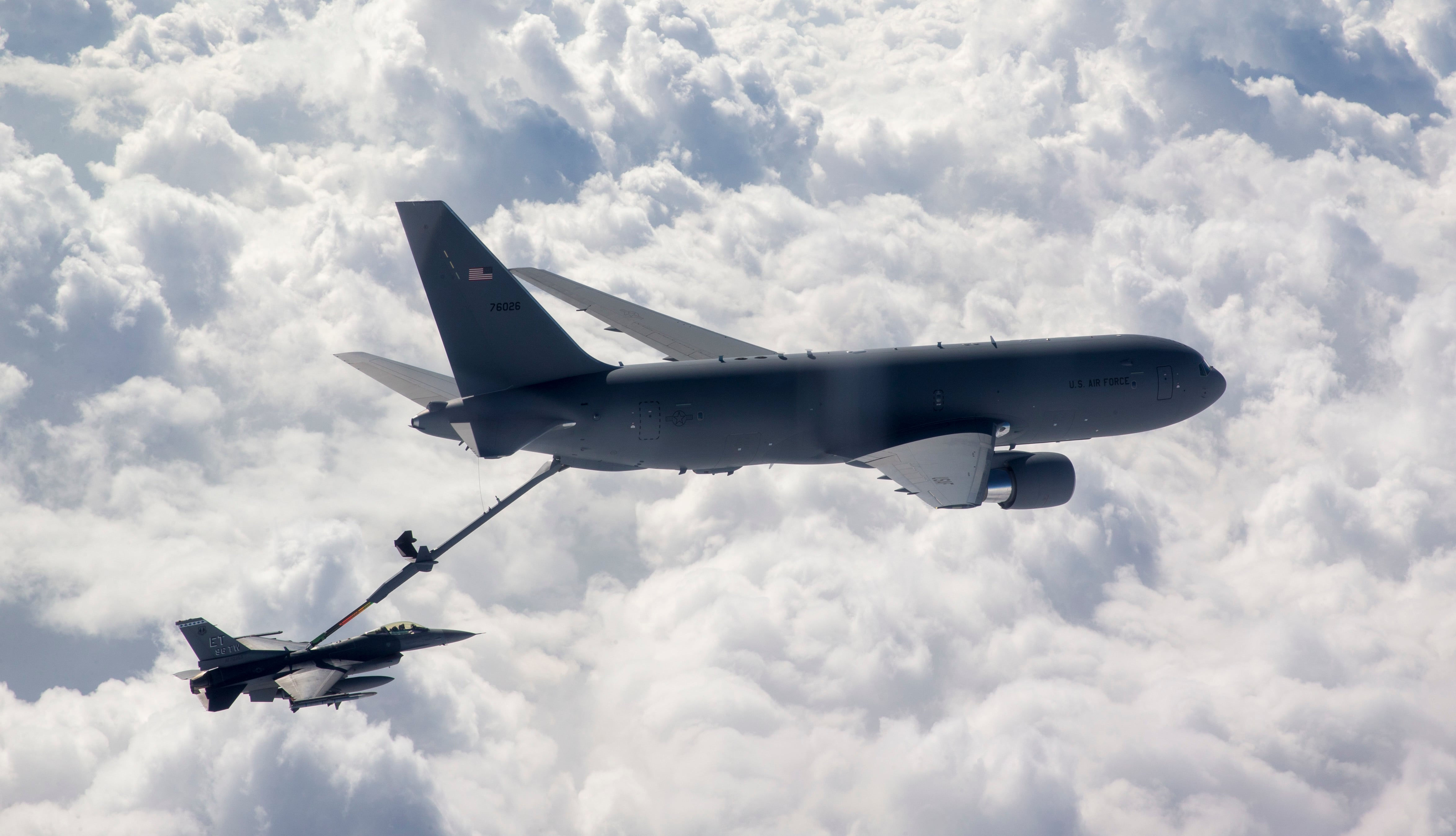WASHINGTON―Amid news a correction for the Air Force’s Boeing-made KC-46 tanker won’t be available until at least 2023, lawmakers are mulling ways to pressure Boeing to present a fix and avoid a gap in the Air Force’s vital refueling capability.
On Wednesday, House Seapower and Projection Forces Subcommittee Ranking Member Rob Wittman, R-Va., said the Air Force should push Boeing by accepting only the minimum number of tankers and exploring whether to recompete the next phase of the tanker’s development. As Senate Armed Services Committee members said Tuesday they are seeking a path ahead, Wittman said he and House colleagues are doing the same.
“Boeing has to have their feet held to the fire and told, ‘Yes, you are going to perform, and this is going to get done as quickly as is humanly possible―in the realm of making the right decisions,’” Wittman told reporters on the sidelines of the McAleese & Associates conference.
Though Boeing is already delivering KC-46s to the service, Air Force Chief of Staff Gen. Dave Goldfein on Tuesday disclosed a delay of one-year over previous estimates for Boeing to begin fielding a fix for the tanker’s Remote Vision System. The RVS, manufactured by Collins Aerospace, is a series of cameras that allows users to steer a refueling boom into the aircraft receiving gas.
Already, the Air Force is in discussions with U.S. Transportation Command over whether to delay newly planned retirements of legacy KC-10 and KC-135 tankers―a more expensive prospect as the Air Force buys new tankers as well. TRANSCOM head Gen. Stephen Lyons warned last week of a potential aerial refueling capability gap, alarming some members of Congress.
According to Wittman, Boeing has admitted that to fix the system will take new hardware, including a new camera, higher resolution screens and replacing copper cables with fiber optics. Because Boeing scientists see solutions in available technologies, Wittman felt that equipment could be fast tracked through testing and into the KC-46 production line.
RELATED

Reducing the number of KC-46 buys for 2021 appeared to be in the mix as Goldfein and Air Force Secretary Barbara Barrett testified before the House Armed Services Committee later Wednesday. House Seapower and Projection Forces Subcommittee Chairman Joe Courtney, D-Conn., told them it would be an issue for the nascent 2021 National Defense Authorization Act.
“We have to make a decision about building more planes that we know are going to have to be fairly significantly retrofitted,” Courtney said of the KC-46. “To the extent this comes to a conclusion, as far as what that retrofit looks like, frankly, it would make for common sense budgeting, so that we know what we’re paying for.”
Speaking with reporters earlier, Wittman suggested the Pentagon exercise the option, under its contract with Boeing to accept only the minimum number of aircraft, twelve, which is less than the projected 15. He also suggested the Pentagon and Congress explore how the contract might be competed again, in the next phase.
“I happen to think we ought to stay at 12 until we get assurances that [necessary fixes] are now underway,” Wittman said, adding, “They have an interest in getting this right because they would like to build more aircraft past the first phase.”
Wittman did hedge some, suggesting the solution shouldn’t be so rushed that it comes with new problems and also said that he didn’t want the Pentagon and Boeing to wind up in litigation. Still, he wants Boeing’s new CEO, David Calhoun, held to account.
“I’m going to give [Boeing’s] leadership credit up to a point, of saying, ‘You said the right things. Now we’ve got to see the right things happen,’” Wittman said.
A Boeing spokesman, in response to Wittman’s remarks, sent the following statement.
“As Air Force leaders have said, Boeing and the Air Force are working closely on a way forward regarding the KC-46 remote vision system. We are committed to meeting the Air Force’s urgent need for a mission-ready KC-46 that provides the aerial refueling capability and capacity growth the warfighter needs.”
Jeff Martin and Valerie Insinna contributed to this report.
Joe Gould was the senior Pentagon reporter for Defense News, covering the intersection of national security policy, politics and the defense industry. He had previously served as Congress reporter.








